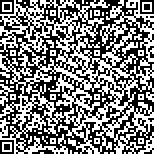| 摘要: |
| [摘要] 目的 探讨在中国≥75岁无症状人群中脊柱矢状位平衡情况及其性别差异,为≥75岁矢状位失衡患者诊疗提供参考。方法 回顾性分析2018年1月至2020年1月因颈肩痛至首都医科大学宣武医院门诊治疗的100例≥75岁无腰背痛症状患者的临床资料,男女各50例。所有患者行脊柱全长正侧位拼接片检查,测量腰椎前凸角(LL)、骶骨倾斜角(SS)、骨盆倾斜角(PT)、骨盆入射角(PI)、胸腰段后凸角(TLK)、胸椎后凸角(TK)、C7-S1矢状面轴向距离(SVA)及胸1骨盆角(TPA)。根据Roussouly分型系统对脊柱矢状位形态进行分型。结果 男性PI、PT、TPA及骨盆入射角与腰椎前凸角之差(PI-LL)均显著低于女性(P<0.05),而男女间TK、TLK、LL、SS及SVA无显著差异(P>0.05)。男性Roussouly Ⅰ~Ⅳ型分别占54.0%、20.0%、18.0%及8.0%,女性分别占36.0%、26.0%、28.0%及10.0%。两组各型分布差异无统计学意义(P>0.05),均以Ⅰ型所占比例最高,Ⅳ型所占比例最低。结论 中国≥75岁无症状人群脊柱矢状位维持一定形态,且具有男女差异,男女间脊柱Roussouly分型分布趋势无显著差异。研究结果可为≥75岁矢状位失衡患者治疗提供参考。 |
| 关键词: 脊柱 矢状位平衡 性别 |
| DOI:10.3969/j.issn.1674-3806.2023.03.04 |
| 分类号:R 681.5 |
| 基金项目:国家自然科学基金资助项目(编号:82102612) |
|
| An analysis on gender-dependent differences in the sagittal spinal balance in an asymptomatic 75-year-old Chinese population |
|
PAN Fu-min, KONG Chao, HAN Di, et al.
|
|
Department of Orthopedics, Xuanwu Hospital, Capital Medical University, Beijing 100053, China
|
| Abstract: |
| [Abstract] Objective To explore the sagittal spinal balance and its gender-dependent differences in an asymptomatic 75-year-old Chinese population, and to provide reference for the diagnosis and treatment of the 75-year-old patients with sagittal spinal imbalance. Methods The clinical data of 100 cases of 75-year-old patients without low back pain but with neck and shoulder pain who were admitted to the Outpatient Department of Xuanwu Hospital, Capital Medical University from January 2018 to January 2020 were retrospectively analyzed. Among the 100 patients, 50 cases were male and the other 50 cases were female. All the patients were examined using the full-length spinal radiographs. Lumbar lordosis(LL), sacral slope(SS), pelvic tilt(PT), pelvic incidence(PI), thoracolumbar angle(TLK), thoracic kyphosis(TK), sagittal vertical axis(SVA) of C7-S1, and T1 pelvic angle(TPA) were measured in the patients.The sagittal spinal morphology was also classified according to the Roussouly classification system. Results The PI, PT, TPA and PI-LL(PI minus LL) in the male patients were significantly lower than those in the female patients(P<0.05). However, there were no significant gender-dependent differences in TK, TLK, LL, SS and SVA(P>0.05). From Roussouly Ⅰ to Roussouly Ⅳ, the sagittal spinal morphology in the male patients accounted for 54.0%, 20.0%, 18.0% and 8.0%, respectively, while that in the female patients accounted for 36.0%, 26.0%, 28.0% and 10.0%, respectively. There were no significant differences in the classification distributions between the two groups(P>0.05), and type Ⅰ accounted for the highest proportion, and type Ⅳ was the least. Conclusion The sagittal spinal morphology of the asymptomatic 75-year-old Chinese population maintains a certain shape, and there exists a gender-dependent difference. There is no significant difference in the Roussouly classification distribution trend of the spine between male and female populations. The results can provide reference for the treatment of 75-year-old patients with sagittal imbalance. |
| Key words: Spine Sagittal balance Gender |

